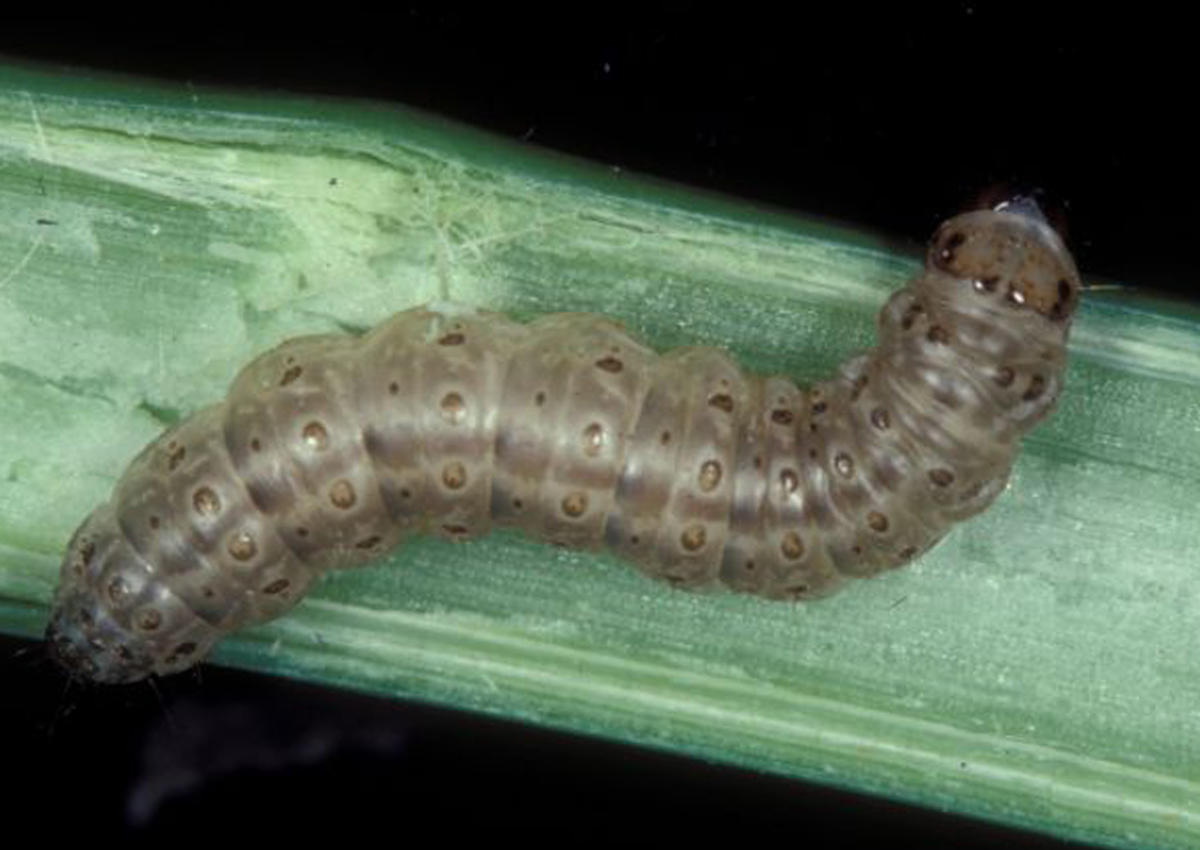
Secrets to Insect Adaption to Climate Change Uncovered in the European Corn Borer Moth
October 23, 2019| |
Biologists led by Tufts University have found two genes from the European corn borer moth (Ostrinia nubilalis) that may allow some insect species to survive climate change by adjusting their biological annual clocks while others succumb. The research team identified variation in two circadian clock genes – per and Pdfr – that enable different populations of the moth to adapt their transitions to longer or shorter winters.
Winter is expected to decrease by a month in the next century, and as climate change is already underway, many insect species are experiencing profound effects. Earlier springtime activity and the emergence from dormant winter state (diapause) allow insect populations to seek out and find favorable environments to produce more generations per year. These activities improve the survivability of the insects who undergo rapid environmental changes. The researchers scanned the corn borer genome among five moth species and found that the two genes correlating with this activity are the genes period (per) and pigment dispersing factor receptor (Pdfr). They further predicted that intense selection on variants of these two genes is likely to be important to adaptation and range expansion under continued global climate change.
The two genes are known to interact with the circadian pacemaker neurons in insect brains, where they synchronize biological activity to the daily cycles of night and day.
For more details, read the article in TuftsNow.
| |
You might also like:
- ISAAA Pocket K No. 6: Bt Insect Resistant Technology
- ISAAA Pocket K No. 43: Biotechnology and Climate Change
- ISAAA Pocket K No. 57: Impact of GM Crops on Soil Health
Biotech Updates is a weekly newsletter of ISAAA, a not-for-profit organization. It is distributed for free to over 22,000 subscribers worldwide to inform them about the key developments in biosciences, especially in biotechnology. Your support will help us in our mission to feed the world with knowledge. You can help by donating as little as $10.
-
See more articles:
-
News from Around the World
- Biotech Crop Area Reaches 2.5 Billion Hectares in 23 Years
- Genetic Engineering Helps Increase Availability of Improved Organic Seeds
- Secrets to Insect Adaption to Climate Change Uncovered in the European Corn Borer Moth
- First Argentine GM Potato to be Released in 2020
- PABIC, University of Agriculture Faisalabad Conduct Seminar to Assess Food Security, Malnutrition, and Biotech in Pakistan
- Partnership and Innovation for Food and Economic Security and Environmental Security for the Region
- Australian Scientists Develop New Method to Produce Drought-Resilient Wheat Quickly, Cheaply, and Accurately
-
Research Highlights
- Researchers Develop Dwarf Maize with Better Yielding Capacity by Controlling Gibberellin Levels
- GM Soybean with Cry8-like Gene Exhibit Resistance to Insect Pest
-
Plant
- Scientists Highlight Responsible Advancement, Safe Use of Synthetic Biology
- North America Genome Editing Market Projected to Reach US$ 4,000 Mn by 2025
-
Read the latest: - Biotech Updates (December 17, 2025)
- Gene Editing Supplement (December 17, 2025)
- Gene Drive Supplement (February 22, 2023)
-
Subscribe to BU: - Share
- Tweet

